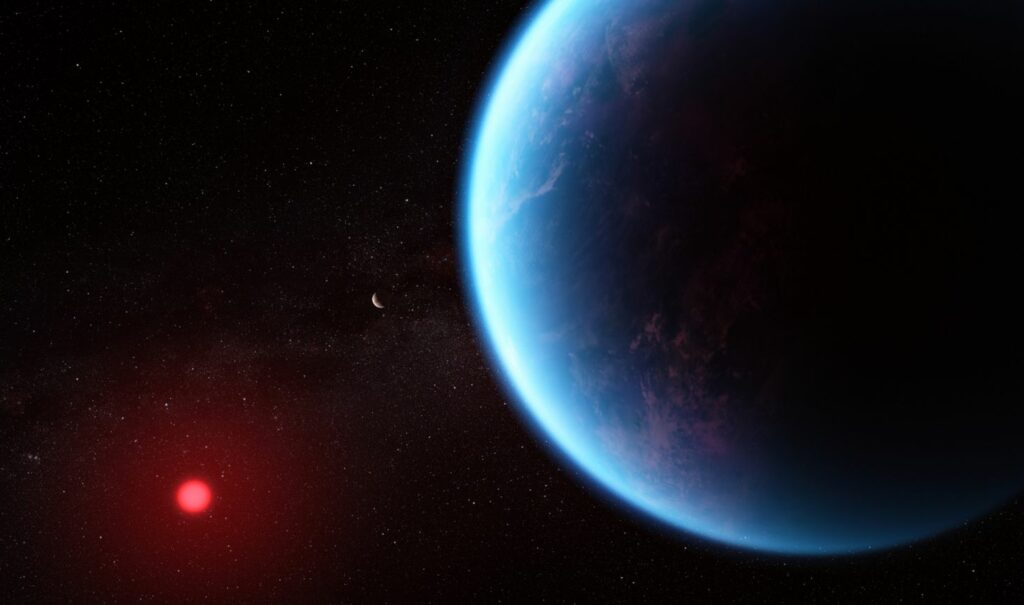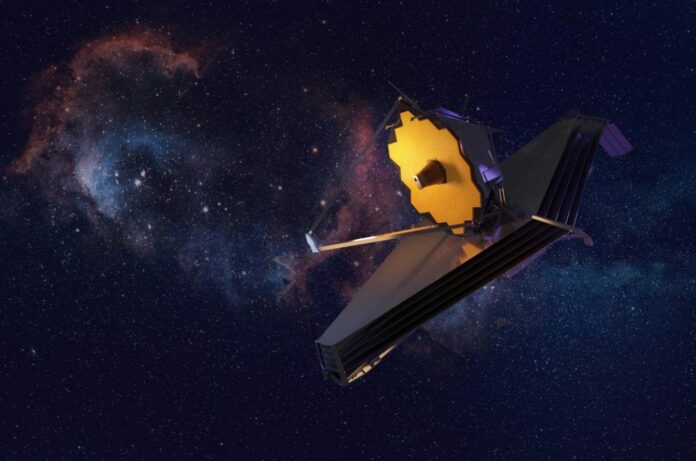A World Unlike Any Other’ – Astronomers Amazed by New Findings from James Webb
Researchers, using the advanced capabilities of the James Webb Space Telescope, have unveiled intriguing discoveries on the distant exoplanet named K2-18 b. Located a staggering 120 light years from Earth, this celestial body boasts characteristics distinct from any within our solar system, having a mass somewhere between Earth and Neptune.
Such planets are believed to be enveloped in hydrogen-rich atmospheres, potentially hiding vast aquatic expanses beneath. They’re often referred to as ‘hycean’ planets, a fusion of ‘hydrogen’ and ‘ocean’. However, our understanding remains rudimentary due to the absence of any similar bodies in our vicinity.
The findings of the study were published in The Astrophysical Journal Letters.

Probing the atmospheres of these hycean planets might seem straightforward, but it’s anything but. Leveraging the James Webb Telescope, positioned a million miles away, in tandem with data from the Hubble Telescope and earth-bound observatories, scientists still grapple with the enigma of potential life on these worlds.
Indications of high levels of methane and carbon dioxide and limited ammonia on K2-18b, a planet dwarfing Earth by eight times, suggest an underwater realm beneath a hydrogen-thick atmosphere. Concurrently, there’s tentative evidence of a compound called dimethyl sulphide (DMS). On Earth, this compound is a marine phytoplankton byproduct. However, experts recommend caution before linking this to extraterrestrial life.
The essence and progression of life on Earth hinge heavily on the omnipresent carbon atom. It’s the foundation of our biological makeup and plays a pivotal role in the Earth’s climatic rhythms, especially as we continue to rely on carbon-rich fossil fuels. Carbon is also an integral part of many contemporary technologies.
In the cosmic realm, the term ‘habitable zone’ often surfaces when new exoplanets are identified. This refers to the potential of a planet to sustain liquid water on its surface, contingent mainly on its proximity to its star. While it’s a basic measure, it stems from the fact that life, as we know it, thrives in the presence of liquid water.
Astrobiology enthusiasts might find this definition somewhat elementary. They’re not wrong. The farther we gaze into space, the blurrier our view becomes. This necessitates distilling our criteria for life, though tools like the James Webb Telescope continue to push these boundaries.
Earth’s surface temperature, pivotal in shaping our climate, is influenced by several intertwined factors: solar energy received, surface reflectiveness (albedo), and greenhouse gas concentrations. The solar energy, or insolation, essentially pertains to the energy Earth receives from the Sun. Factors like clouds, ice cover, plant cover, land-sea ratios, and suspended particles play a role in albedo, influencing how much solar energy is reflected back.
The energy not returned by albedo is soaked up by Earth and then re-emitted as infrared radiation. This is where greenhouse gases step in, capturing this radiation and consequently heating up the atmosphere. An imbalance in these gases can either cause the planet to freeze or excessively heat up, as presumably happened to Venus. Historically, carbon dioxide has maintained Earth’s temperature, acting like a natural thermostat. But human activities, particularly burning fossil fuels, are disrupting this balance.
Consequently, deeming an exoplanet as ‘habitable’ without insights into its atmospheric composition is an oversimplification. This underscores the importance of detecting key atmospheric molecules like carbon dioxide, methane, and water. It’s imperative to ascertain the total energy output of the parent star across all spectrums. This highlights the invaluable role of the Hubble Telescope, currently the sole tool for measuring star energy in ultraviolet wavelengths.
Image Credit: Shutterstock
